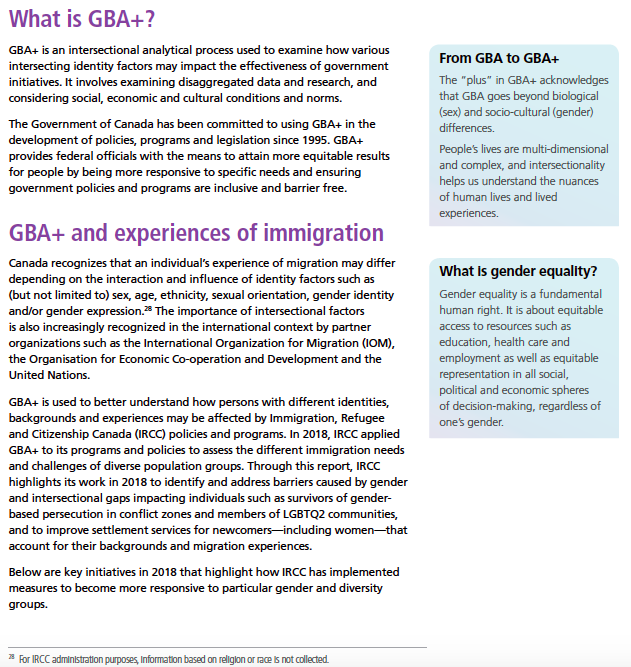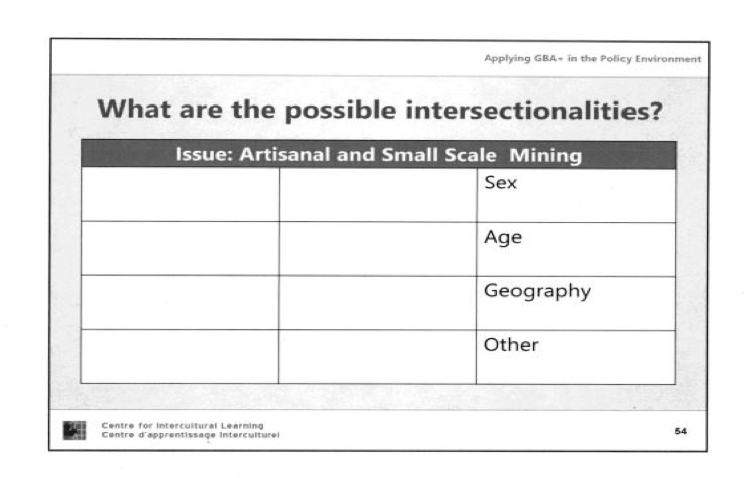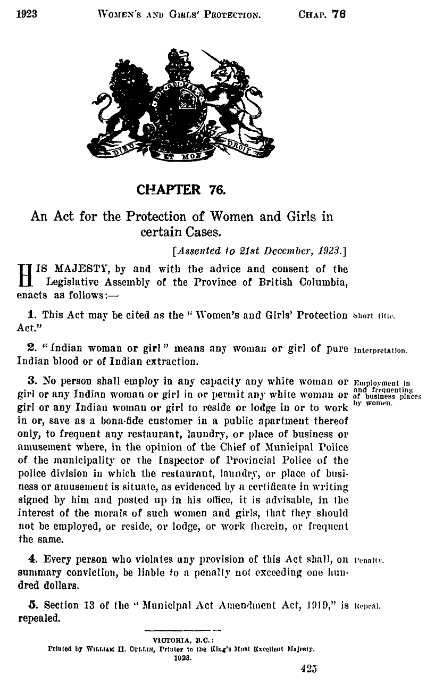COVID and Migrant Workers as a Starting Point
While we rush to seal our loosely-defined borders and legal exceptions, let us not lose sight of the reality of who it is ‘doing the work‘ as low-paid essential service workers in Canada – temporary foreign workers (TFWs). Accordingly to a Government of Canada official, over 60,000 temporary foreign workers have come to Canada to work in our agriculture and agri-food sector.
I begin this piece by rejecting the term, ‘low-skilled.’ Anyone who at times like these is contributing putting food on to our table and taking care of immunocompromised seniors at senior’s home and care facilities, I hold to the highest esteem.
From 2019 Open Data, we know Canada and British Columbia’s are coming from five countries – Mexico, India, Jamaica, Philippines, and Guatemala. Asides from the correlation that they are all from the Global South, they also all represent countries where racialized folk – brown and black – are primarily entering Canada to do the work Canadians are not doing. While I understand some are floating around the idea of a national work program to get Canadians into these positions over TFWs, we must admit the reality that the exposure of risk to COVID-19 of this work (not to mention the low pay) would drive most away. This reality also creates a contradiction that Chris Selley questions in the subheading for his recent National Post article titled, ‘Ottawa’s plan for quarantining temporary foreign workers is more bizarre than comforting,’ where he writes:
If we can identify a group of people without whose labour we literally wouldn’t be able to feed ourselves, why are we denying them a path to citizenship?
I share the same question. Through this pandemic we have already had one TFW outbreak at a Kelowna greenhouse/nursery and countless stories of senior home outbreaks which make up half of Canada’s confirmed deaths from COVID-19. We have not said so much of a thank you, other than discussion of how to quarantine them effectively upon entry and pay back employers for lost wages.
However, worse yet, we’ve been left an invisible image of who these workers are, what their races are, and their migration histories that have led them to heed the call into action. While we are all in this as Canadians, I am eager to know who these individuals are and eventually reward them with pathways to permanent residence or at the very least create new pathways that honour that work.
Indeed, if we are putting racialized migrant workers on the front lines of COVID-19, I argue we should putting these same migrant workers in the front line of new immigration programs to facilitate their transition as permanent residents.
The Invisibility of Canadian Racism and the Misapplication of Intersectionality
However, there appears to be preferred invisibility – something that runs deep when it comes to issues of immigration and race in this country.
The Canadian Government approach to immigration continues to be one that on the outside adopts a Gender Based Analysis (“GBA”)+ framework that states an intention to take into account intersectionality, but a reality that race is the unspoken, untouched, undelved into dark space – a Pandora’s Box.
IRCC does not collect data on religion or race.


Zoomed in, in case the footnote is hard to see:

We know only what countries applicants are coming from, not who they are by way of their race, ethnicity, and colour, and how discrimination factors into visa refusals and availability of pathways to permanent residence. We know anecdotally from client experience and those cases that end up published as case law that visa officers discriminate against individuals from minority racial/ethnic groups, particularly when the visa office responsible for processing the applications is not located in the same country.
How are we purportedly taking into GBA+ if we have not looked further at what the + entails. How can we claim to even be applying an intersectional lens?


The GBA+ touts itself as applying an intersectional lens in various Government training materials, but one questions how Kimberlé Crenshaw would view this given her conception of intersectionality was focused on the intersections of gender (yes), but very and just as importantly class, and race.
When you go back to the foundations of Crenshaw’s underlying work, the research was centred heavily on race and migration status. She examined how immigrant women’s vulnerability to spousal violence and the fear of undocumented women were exacerbated by legislation aimed at subordinating the sponsor, creating ‘double subordination.’ (See: Crenshaw, Mapping the Margins: Intersectionality, Identity Politics, and Violence Against Women of Color)
Much of intersectionality has unfortunately become what has become what sociologist Sirma Bilge calls “ornamental intersectionality,” a neoliberal approach that “allows institutions and individuals to accumulate value through good public relations and ‘rebranding’ without the need to actually address the underlying structures that produce and sustain injustice.”
Currently, proposed regulatory and legislative amendments do go through a GBA+ lens through Part 1 of the Gazette Regulatory Impact Analysis Statement (“RIAS”) stakeholder feedback process but this process is primarily based only on Gender, which itself is a primarily a supplement to other economic and resource considerations. No one asks in these pieces how racialized communities of women or non-binary folk will be affected, nor are most organizations who will provide feedback putting racialized or non-binary gendered migrant communities at the centre of their analytical lens. The centred lens on immigration continues to be white and able-bodied, from it’s legal practitioners to the immigrants held in the highest demand and sought after.
Furthermore, the very idea of intersectionality has been to view the different social categorizations as separate and distinct boxes for us to parse ourselves into, rather layers and true intersections – a mistake we continue to repeat in our misclassification and misapplication of the term.
Colourblindness as a Racist Policy
Ultimately, without identifying race as an important social stratification, that centres other discrimination – which could include language, migration status, and gender – we remain stuck in colourblindness.
You may have heard about colourblindness recently with respect to COVID-19. In the context of COVID-19, Ontario’s chief medical officer of health, Dr. David Williams, recently stated:
“Right now we consider our main risk groups (to be) the elderly, those with other co-morbidities, regardless of what race they are,” he said. “Regardless of race, ethnic or other backgrounds, they’re all equally important to us.”
But what got us to this colourblind (regardless of race) approach? What got us to normalize the one human race (we’re all the same) theory?
Writer Ibram X. Kendi explores the foundation of racism as a mode for power holding, and writes poignantly in his book, How to Be in An Anti-Racist at page 10:
“The common idea of claiming “colorblindness” is akin to the notion of being “not racist” – as with the “not racist” the colorblind individual, by ostensibly failing to see race, fails to see racism and falls into racial passivity. The language of colorblindness – like the language of “not racist” is a mask to hide our racism”
Constance Backhouse, whose seminal work, Colour-Coded: A Legal History of Racism in Canada, 1900-1950, on the history of racism and the law in Canada, similarly examines how immigration help served to help aggrandize white power. She writes:
“Immigration laws shaped the very contours of Canadian society in ways that aggrandized the centrality of white power.” (Backhouse, at page 15)
She provides example in her book many instances where the lines between races were either purposely blurred, combined, or in some cases written out, to achieve this power. In my perspective, colorblind is not only a neoliberal feel-good strategy, but a tool that has been used historically to justify racist policies.
For example, Canadian Immigration laws led to the closure of borders for Asian and Black immigrants in the first half of the 20th century, while anti-immigrant sentiment and racist legislation severely policed and controlled communities from being able to operate businesses (for example laws preventing the hiring of white women) and adding restricted covenants preventing them from owning property (just to name a few examples):


Laws such as B.C.’s above An Act for the Protection of Women and Girls in certain Cases (which was in place until 1968) were indeed purposely amended as a result of criticism that it was too critically aimed at the Chinese community, and replaced with more universal language with the same intentions and substantive effect.
The law was colourblind, and by today’s Charter standards, a claimant would therefore need to ‘do more’ to prove it was indeed racist, but we know from the history it most definitely was. I would argue that the assumption that we have stepped out of racism due to legal reform is a dangerous myth and one we must continue to breka down.
True s.15 of the Charter, formally added equality rights that were supposed to apply regardless of “race, national or ethnic origin, colour,” language mirrored by other employment and human rights legislation. There were historical apologies and reparations, but I would argue there has never been a race equity lens applied to immigration law – to study, if you so well, of whether and how laws continue to discriminate against racialized marginalized communities.
Built Off the Back of Coloured Bodies
Applicants who have tried to bring racism up in Courts (environments that bluntly speaking do not at all reflect Canada’s racial diversity), have faced significant evidentiary hurdles. One thinks of the Federal Court of Appeal’s decision in Begum v. Canada (Citizenship and Immigration), 2018 FCA 181 (CanLII), [2019] 2 FCR 488, which upholds the higher burden on claimants where the a law applies neutrally on its face, and simultaneously criticizes a lack of specific evidence on race, where as we have seen none is being collected from official sources, leaving case studies and academic formulations the only current pathway forward (both of which the Court criticized).
At the same time we have seen our case law build up various areas off the backs of racialized individuals. Using humanitarian and compassionate grounds as just one example, the leadings cases in this area involve Black Jamaican woman, Ms. Mavis Baker, where the visa officer wrote blatant racist marks into the applicant’s file [Baker v. Canada (Minister of Citizenship and Immigration), 1999 CanLII 699 (SCC), [1999] 2 SCR 817], a Black Jamaican woman, Ms. Daphney Hawthorne [Hawthorne v. Canada (Minister of Citizenship and Immigration), 2002 FCA 475 (CanLII) that helped define the scope of the Best interest of the Child (“BIOTC”), [2003] 2 FC 555,], and a former Sri Lankan child, Mr. Jeyakannan Kanthasamy, [Kanthasamy v. Canada (Citizenship and Immigration), 2015 SCC 61 (CanLII), [2015] 3 SCR 909 which has become the leading case of BIOTC.
Unfortunately with the framework for humanitarian and compassionate grounds as it stands, little can be done other than to criticize the structures within countries of citizenship and former habitual residence. We will continue to see Brown and Black applicants held down by Canadian system with no recourse other than to blame foreign systems in order to seek discretionary relief. These same blames are then perpetuated on other visa applicants and refugee claimants from those countries in what becomes a very problematic cycle. Canadian racism or the intersectional challenges of migrants, particularly those with precarious status, again gets whitewashed through forced positive explanations of ‘establishment’ and ‘ties to Canada’
I know racialized migrants are the ones struggling most because I viscerally see them. I constantly receive migrant workers in my office, whom facing their first work permit extension, visitor record extension (in order to facilitate their on-going status in Canada). They are the ones who ultimately end up in admissibility hearings and that we must run detention reviews for.
Returning back to the COVID reality, it is a real shame that the temporary foreign workers coming from around the world or who are here and finding themselves suddenly unemployed are receiving little in the way of Government-funded legal support. The minute the employer lifeline is removed for many workers, the void is filled only by good willed non-profit organizations, many with limited capacity to take on individual cases let alone try and advocate on a more systemic basis. Access to services itself is often marred by racist interactions, preconception, and barriers. Many organizations do not even have materials translated into key languages such as Spanish, Hindi/Punjabi, and Tagalog. With limited funding and now a limited staff as a result of their own COVID consequences, they have had no choice but to turn many people away.
The reality is most of these foreign workers affected are Brown, Black, and from countries in the Global South, with major linguistic barriers. Many talk about difficulties there, difficulties here, but generally have ended up in the whirlwind of challenges of identity, hopes of assimilation, and experiences of harm-causing racism.
Centering Race Post-COVID
Taking race into account when we look at these cases will allow us to examine processes in a more systems-driven way rather than simply focusing on individuals. For example, we can look at Personal Service Worker (PSWs) and caregivers right now as a collective community rather than individuals who have suffered negative consequences or come from complicated pasts.
Until Canada can prove it is taking anti-racist (not just non-racist) steps to tackle immigration and COVID, we’re stuck in invisibility. The same invisibility women of colour feel when they are under recognized and first to be blamed at their workplaces (Dr. Tam, comes to mind). COVID and the migrant workers who were part of helping us get through these times will fade to collective memory as a large part of the fault, a small part of solution, a consequence of their failures, and the results of our success. Our only ‘thank you’s’ will be in the form of temporary extensions and expiring permits, a few Canadian dollars to bring back to homes already ravaged as a result of western colonialism and imperialism. The mental health and trauma being experienced by workers being shepherded into the fields to work at increased productive capacity or migrant personal service workers having to watch individuals take their last breaths and expose them to illness, a distant memory.
I really hope this is a good opportunity to rethink our way of moving forward post-COVID. As another Indian writer Arundhati Roy so eloquently put it, we can break with the past and imagine the world anew, taking anti-racist (not just not racist and colourblind) steps to eliminate the historical and present day prejudices of anti-blackness, racist immigration policies, and barriers for darker-skinned migrants from the Global South. We can re-examine why we refuse so many Black African visitors and students, and why our rush to Artificial Intelligence has not adequately taken into account factors such as inherent racial bias. We can start building ties with migrant communities and Canada’s Indigenous communities creating solidarity, rather than let the State divide and conquer us into separate groups fighting over scarce resources that neither of us control.
I have submitted for approval a conference paper where I discuss how intersectionality can be rethought of in the Immigration Appeal Division (“IAD”) context. Much of this expands on what I talked about in this piece. I hope that when this paper is published I can begin expanding this conversation to other areas so that once we are prepared to re-engage with each other and our systems, we can make sure to keep racism at the front, not back, or our collective societal consciousness.
Also posted in Will Tao’s Vancouver Immigration Blog
Will Tao, BA, JD, is a Canadian immigration and refugee lawyer at Edelmann & Co. He provides legal services in all areas of Canadian immigration and refugee law, with a focus on complex refusals, appeals and judicial reviews. Will also provides strategic advice and consulting to government, media, educational institutions, and businesses on immigration/refugee, decolonization and race/inclusion-related issues.
